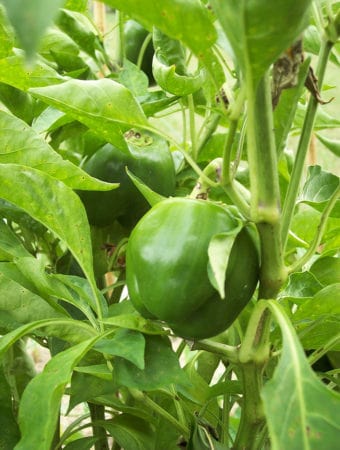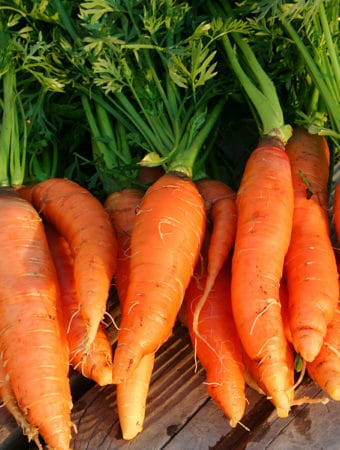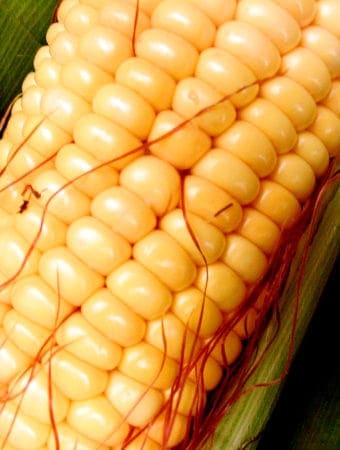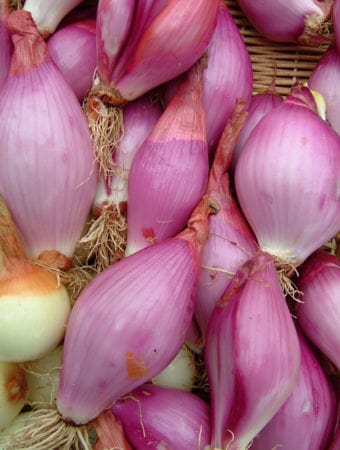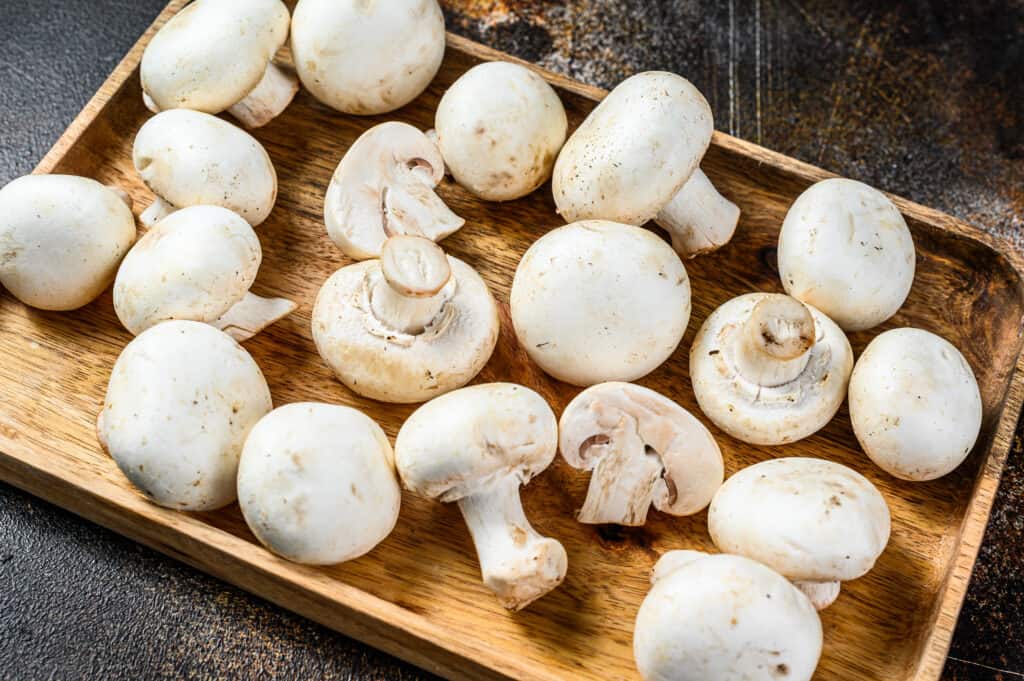
Mushrooms have a deliciously woodsy flavor and are easy to prepare.
Use mushrooms in appetizers, salads, dips, soups, sauces, omelets, stews, pizzas, and pasta, or match them with meat, poultry, fish, and shellfish. Mushrooms can be sautéed, broiled, grilled, steamed, or stir-fried.
Cultivated mushrooms are available year-round. The peak season for many wild mushrooms is fall and winter.
How to Choose Mushrooms
- Select fresh mushrooms without blemish and without slimy spots or signs of decay.
- Button mushrooms should be smooth and plump with caps that are closed around the stems.
- Avoid spotted mushrooms and those with open caps that are dark and have exposed gills.
- To gather mushrooms in the wild you must be able to identify them properly. Some species are very poisonous others are of little use in cookery. If you have little knowledge or no experience with mushrooms choose only cultivated mushrooms.
How to Store Mushrooms
- Keep unwashed mushrooms wrapped in a paper towel, a single layer is best, in a plastic bag in the refrigerator for up to 4 days.
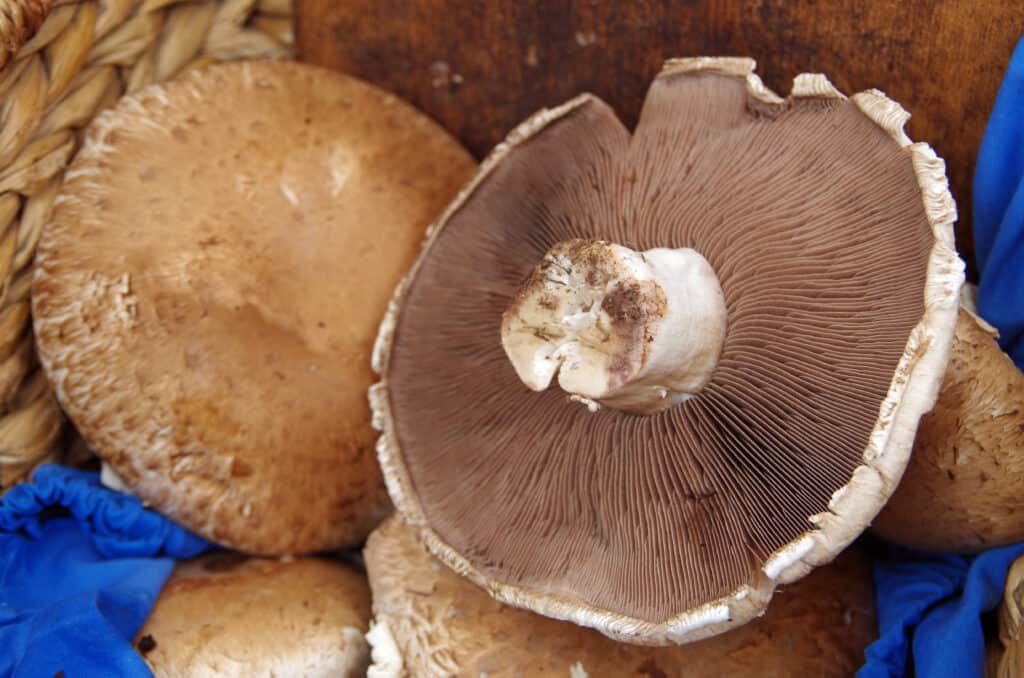
How to Prep Mushrooms
- Wipe mushrooms with a damp cloth or mushroom brush, or rinse under cold running water and pat dry.
- Trim and discard stem base; discard shitake stems.
- Use whole or slice lengthwise through the stem, or chop.
- Do not soak mushrooms before using them because they will absorb water and become mushy.
- Allow about ¼ pound per person when served as a vegetable.
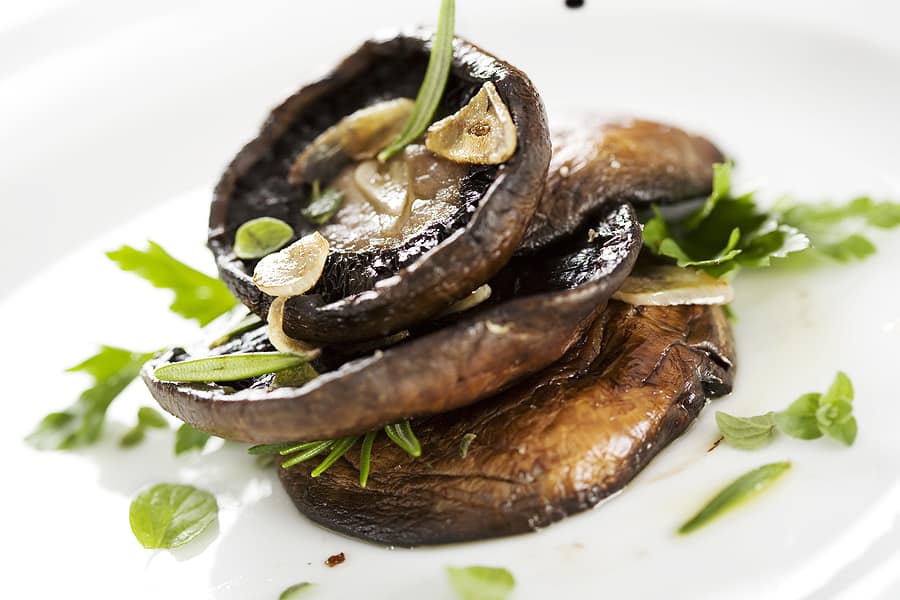
Mushroom Serving Suggestions
- Most mushrooms have a greater food value than green vegetables and many can be served alone as a main course. Mushrooms are favorites in both haute cuisine and traditional recipes.
- Serve raw with a dip for an appetizer.
- Slice and add to green salads or soups.
- Butter-steam slices and use to top hamburgers or place in omelets.
- Stuff large mushroom caps with sausage, breadcrumbs, or spinach to bake as a side dish or entrée.
- Dress with cheese sauce or melted butter seasoned with parsley, tarragon, thyme or dry sherry.
- Marinate small mushrooms in vinaigrette.
- Grill who portobello caps and serve burger-style.
- Add mushrooms to soup, chicken, and seafood dishes.
- Use shiitakes in Chinese and Japanese dishes.
- Stuff mushrooms caps with herbed breadcrumbs or chopped vegetables or risotto and broil them, or sauté mushrooms lightly with chopped shallots and parsley and a little thyme and serve them as a side dish.
- Simmer fresh mushrooms in red wine and tomatoes with parsley and serve as a main dish, or put a fat portobello mushroom on the grill and serve it just like a burger
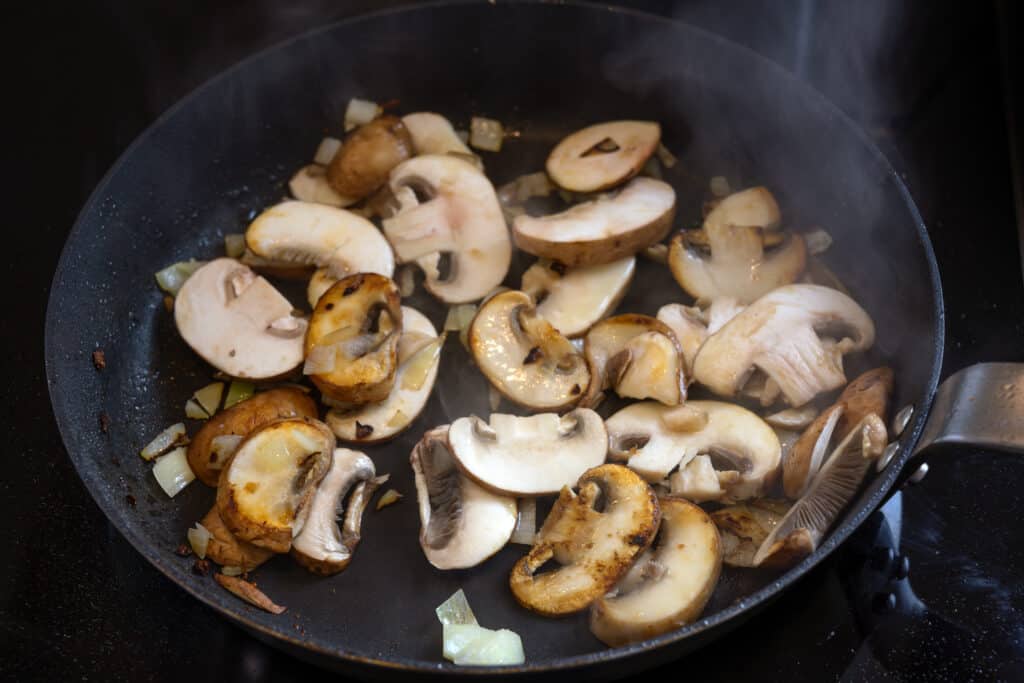
How to Butter-Steam Mushrooms
- Cut mushrooms lengthwise into ¼-inch slices.
- Place up to 2 tablespoons of butter or margarine in a deep skillet over medium heat.
- Add the mushrooms and cook, stirring about 3 to 4 minutes.

How to Grill Mushrooms
Use button, portobello, or shitake mushrooms.
- Remove the stem ends to grill just caps or cut larger mushrooms down the middle and grill cap and stem together. Thread smaller mushrooms on skewers.
- Brush mushrooms with plain or seasoned vegetable oil, olive oil, or melted butter or margarine.
- Place rack about 4 inches above heat.
- Grill turning at least once until tender and lightly browned about 10 minutes.
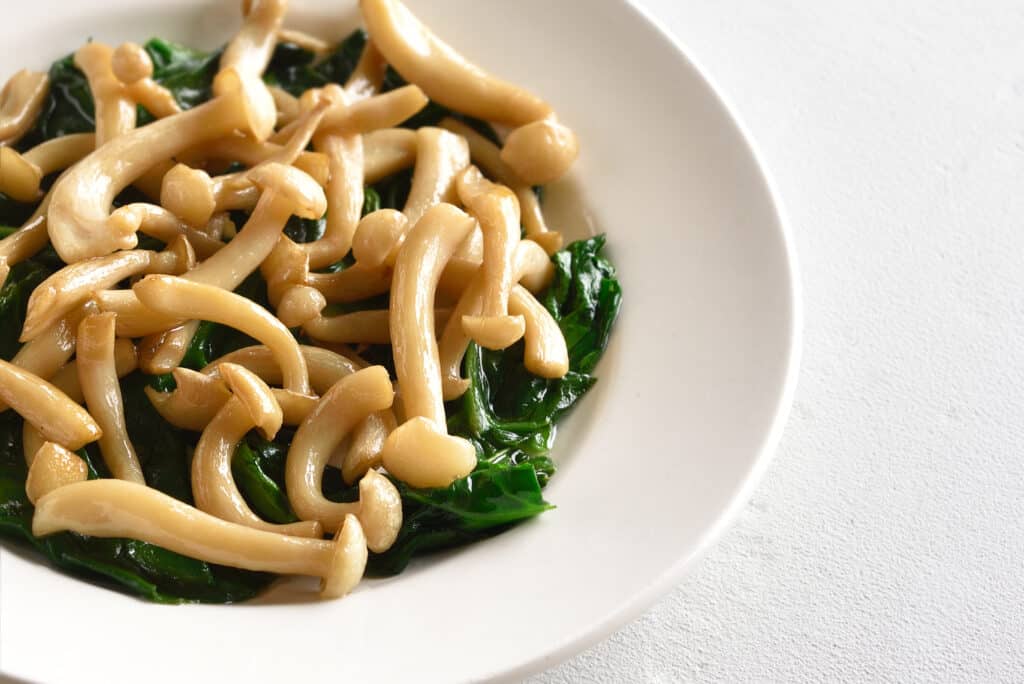
How to Stir-Fry Mushrooms
- Cut mushrooms lengthwise into ¼-inch slices.
- Put 1 tablespoon vegetable oil in a skillet or wok
- Add the mushrooms and cook stirring until just soft about 3 to 4 minutes.
Mushroom Flavor Partners
- Mushrooms have a flavor affinity for beef, chicken, cream, fish and seafood, game, garlic, herbs, onion, pasta, pork, rice, and wine.
- Season mushrooms with salt, pepper, onion, garlic, mustard, dill, oregano, nutmeg, basil, paprika, parsley, sage, rosemary, or thyme.
- Serve mushrooms alone or with peas, beans, onions, corn, tomatoes, artichokes, bacon, or sausage or any of these combined. Top mushrooms with plain or flavored butter or margarine, vinaigrette dressing, or plain or flavored mayonnaise.
Mushroom Nutrition
- Mushrooms are 89 percent water. They are high in potassium and riboflavin.
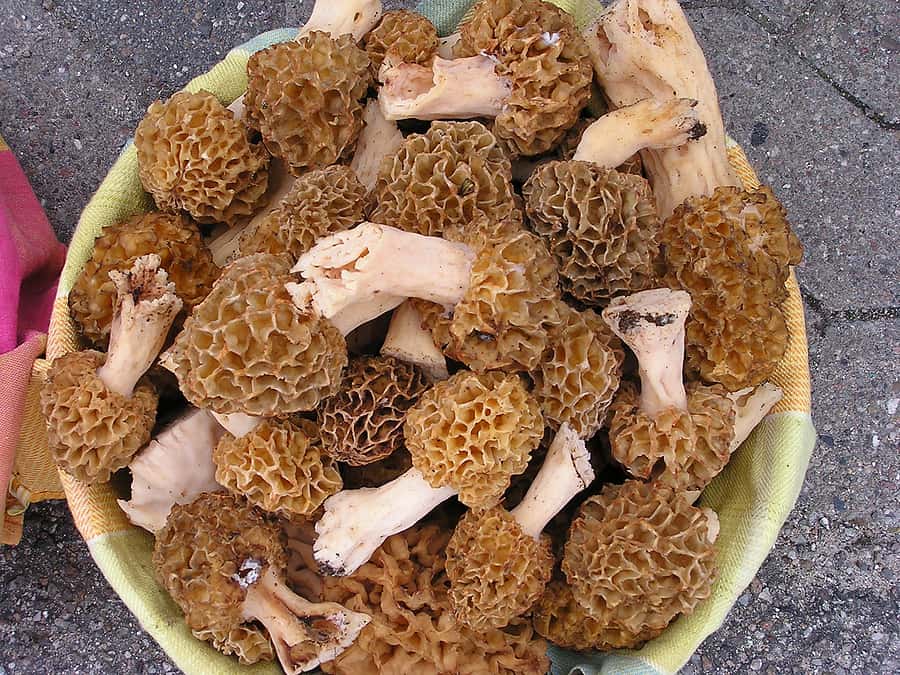
Get to Know Mushrooms
- There are more than 35,000 species of mushrooms. Most of them are not edible, and some of them are poisonous. Unless you are a mushroom expert, choose cultivated mushrooms. There are dozens of cultivated mushrooms to choose from with many different flavors and textures.
- The mushroom is not a vegetable; it is a fungus, which means it is a plant that has neither chlorophyll, which vegetables use to form simple carbohydrates and sugars, nor leaves, flowers, or roots.
- Without chlorophyll, mushrooms must draw nutrition from existing organic materials where they grow. Most mushrooms grow in cool, damp places like woodlands and meadows where the soil is rich in humus, a source of food for the mushroom.
- Mushrooms grow in a range of colors from white to black and in a variety of shapes and sizes. Some mushrooms have short stems, some long stems. Some have button caps, some have pointed, conical caps and some have flat, wide caps. Mushrooms can be smooth textured or pitted, or honeycombed, or ruffled. The flavor of mushrooms can vary from bland to rich and from nutty to earthy.
- Mushrooms have been cultivated for thousands of years. The ancient Greeks and Roman ate cultivated mushrooms.
- The word mushroom was first recorded in the fifteenth century. It was borrowed from the Old French mousseron which can be traced back to the Latin word mussiriō, a word of unknown origin.




